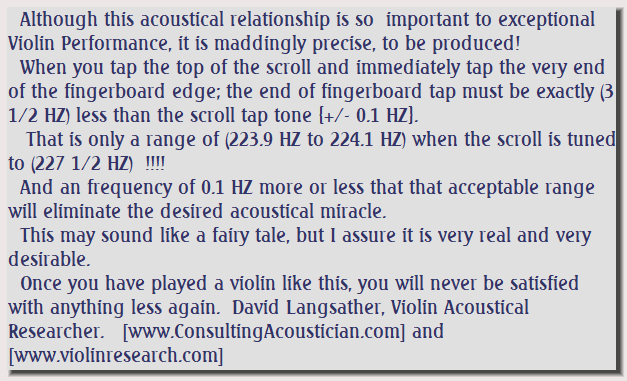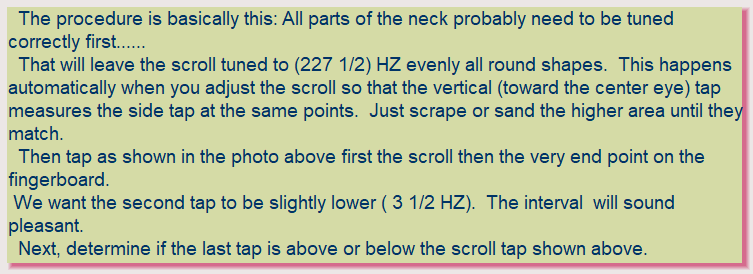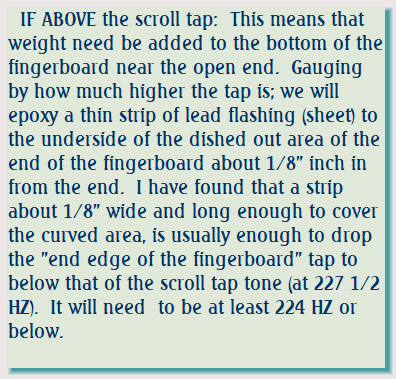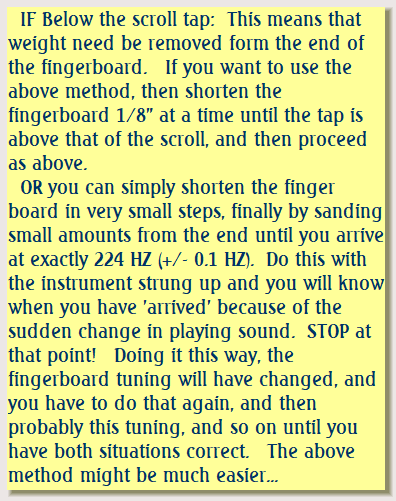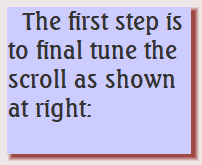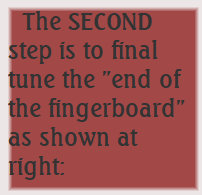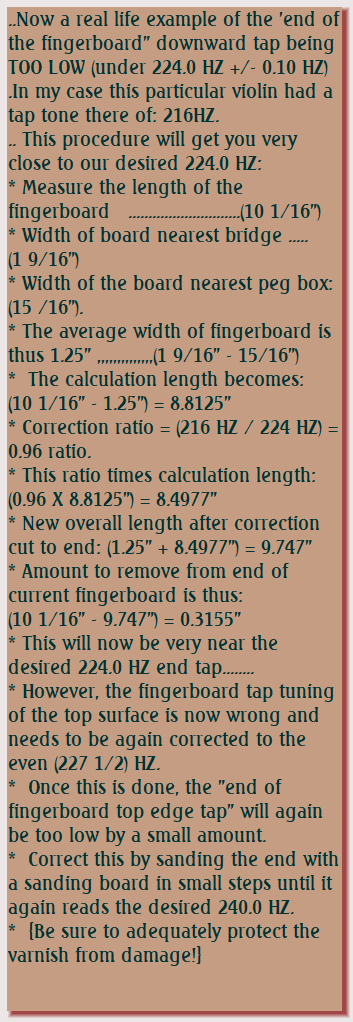(9/2021)
page AA_65 /_66
...By David Langsather, Violin Acoustical Researcher www.violinresearch.com info@violinresearch.com
{For a fancy name, lets call it: "The Violin Scroll // FingerBoard Acoustical Couple"
...I believe the discoverer, or describer, gets to name.....?}
Interestingly, this is the same acoustical distance as the best sounding balance between the two two sound holes; 3 1/2 HZ
This probably suggests that it is our Ear/Hearing/Brain mechanism that controls what sounds best to our ears.
I am putting together a video showing the sound before and after making this one acoustical adjustment, and showing the adjusting process as well. Two versions:
{227 1/2} HZ
{224} HZ
Pivot Axis (no vertical movement)
Cross section of end of fingerboard showing the lead flashing (sheet) epoxied to the bottom surface about 1/8" inch in from the open end.
I have used 3M 420 epoxy (but any epoxy is probably fine). Shine (sand) the top surface of the lead, then bend it with finger pressure to proper shape; apply mixed epoxy to top surface and press into place (wear protective gloves when working with epoxy glues). You can also apply tape to bottom to hold in place while glue dries, or just have fingerboard upside down while glue is curing.
Watch the video link above for detailed instruction and an example of results....
View from above:
(227 1/2 HZ)
(226 1/2 HZ)
(228 1/2 HZ)
View from above:
(224.0 HZ)
(224.0 HZ)
(224.0HZ)
As you remove weight from below (in the bottom arch of the end of the fingerboard),
The tap tones of the top fingerboard surface will decrease evenly, and the side tap tones of the fingerboard will equally increase.
Tap on the top surface of the fingerboard and then immediately the side tap nearest. Lower that side tap until it is in harmony with the top surface tap. Do this along both sides of fingerboard.
Now go back and check the end of fingerboard tuning. You will find that it is now too low.
Carefully remove lead weight (or ebony if no weight was added) bringing the desirable goal tap back up.
Now check tap tone of top surface of fingerboard again. It is probably too low again, but not as much as before.
Repeat process until they are both where they should be .
This is a lot of work, but well worth it, in my opinion.
You will be surprised at the real 'voice' the instrument now produces !
David Langsather, Salem, Oregon (5/ 2021)



